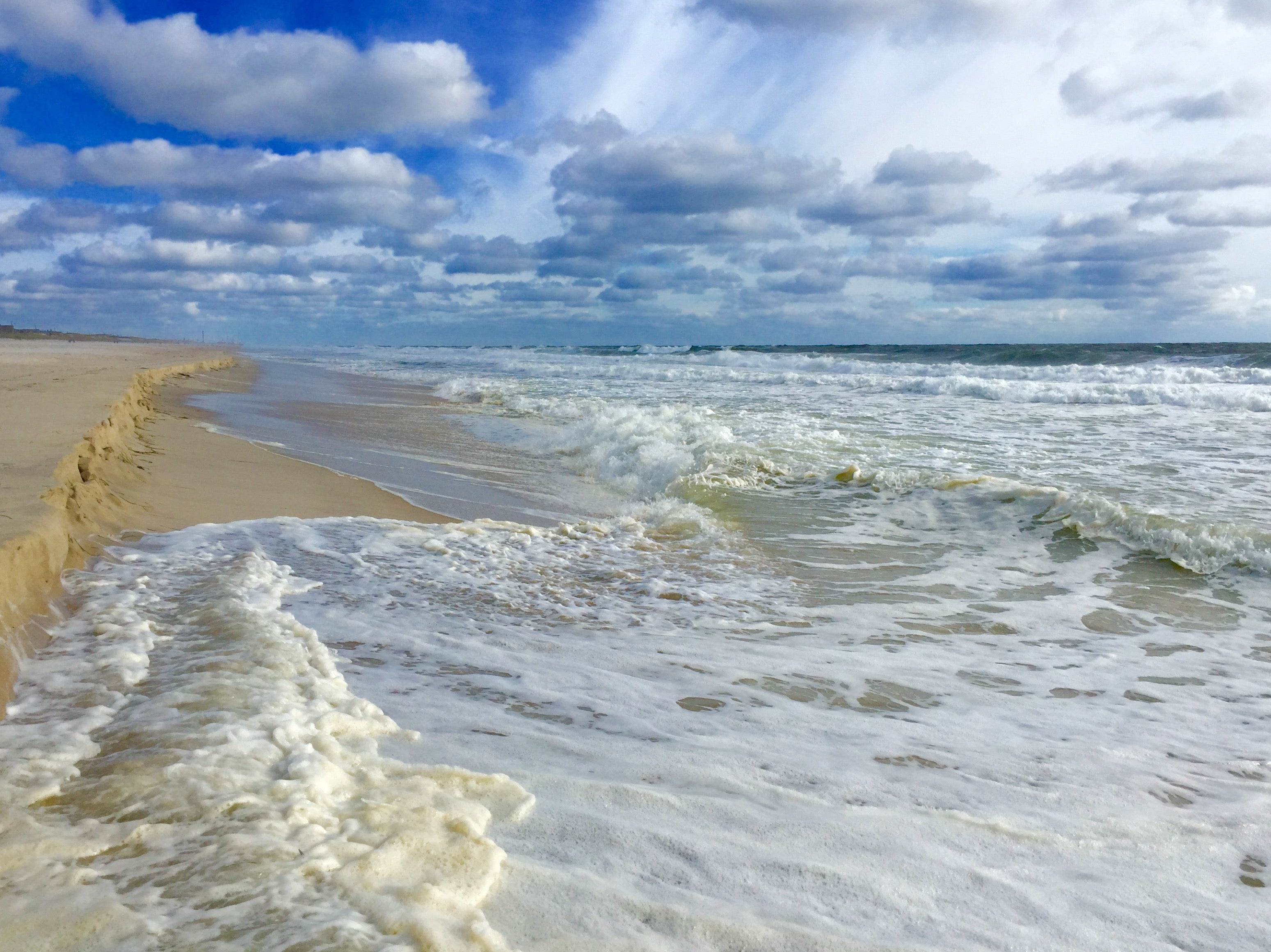Rip current risk to increase when Karl swell arrives

South Seaside Park in September 2015. (Photo: Justin Auciello/for NewsWorks)
A tropical cyclone currently far away in the Atlantic Ocean will have no direct impact on the Eastern seaboard but will spur rip current concerns, forecasters say.
Tropical Depression Karl is currently approximately 1,000 miles south-southeast of Bermuda, according to the National Hurricane Center.
Forecasters expect the cyclone to curve more to the northwest before northerly then northeasterly as it nears Bermuda as a tropical storm early Saturday morning. Karl is then expected to track toward the northeast while it strengthens to hurricane strength by early Sunday morning.
The National Weather Service expects a “pretty good chance” of a moderate risk for the formation of dangerous rip currents “on at least one weekend day” as a four to five foot swell arrives along with a gusty northeast wind.
But there’s already a low enhanced risk for the northern Jersey Shore and a moderate risk along the southern shore for today that is expected to decrease tomorrow and Friday before increasing again by the weekend.
“Water temperatures have reverted to significantly above normal, and so while swimming off the New Jersey and Delaware beaches these next several warm days will be fun, be aware that rip currents can be dangerous to your health,” writes a forecaster from the National Weather Service office in Mount Holly.
Rip currents are powerful channels of water flowing quickly away from the shore, often occurring in low spots or breaks in the sandbar and in the vicinity of structures such as groins, jetties, and piers.
According to NOAA, here’s how to identify a rip current:
A channel of churning, choppy water.
An area having a notable difference in water color.
A line of foam, seaweed, or debris moving steadily seaward.
A break in the incoming wave pattern.
Rip current speeds vary, with an average pull of 1-2 feet per second, but some can move as fast as 8 feet per second, which is faster than an Olympic swimmer, according to NOAA.
Your first line of defense is to check the surf forecast before you head to the beach. NOAA updates the forecast daily. Watch this informative NOAA video on rip current safety.
If caught in a rip current, NOAA advises:
Stay calm.
Don’t fight the current.
Escape the current by swimming in a direction following the shoreline. When free of the current, swim at an angle—away from the current—toward shore.
If you are unable to escape by swimming, float or tread water. When the current weakens, swim at an angle away from the current toward shore.
If at any time you feel you will be unable to reach shore, draw attention to yourself: face the shore, call or wave for help.
WHYY is your source for fact-based, in-depth journalism and information. As a nonprofit organization, we rely on financial support from readers like you. Please give today.

